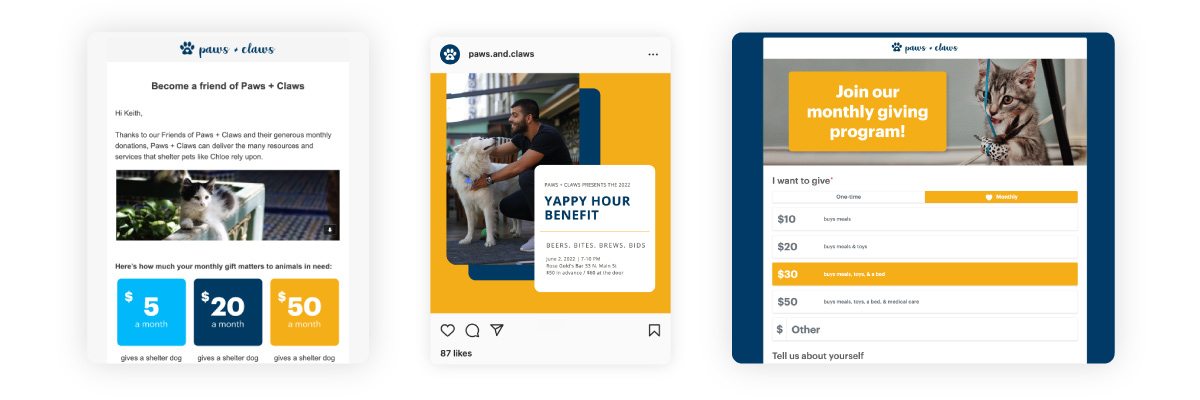
As a Nonprofit Executive Director, one of your key responsibilities is to ensure the sustainable growth and success of your organization. To achieve this, building a strong donor base is essential. Donors provide the financial support necessary to advance your mission and make a positive impact in the community. This essay aims to provide you with valuable insights and strategies for building donor lists, focusing on attracting interested individuals, converting them into donors, and cultivating long-term relationships to nurture major donors and recurring donors.
Attracting Interested Individuals
To grow your donor base, first a donor development project must attract potential donors. There are many kinds of potential donors: volunteers, event attendees, patrons, mentors, and more. It is important for each nonprofit to identify who your supporters and interested community members are, and then figure out how to best target them.
Define and Communicate Your Mission:
Clearly articulate your organization’s mission and values, highlighting the impact you aim to make. Craft a compelling story that resonates with potential donors and captures their interest. Develop a concise and impactful elevator pitch that can be used in various communication channels.
Targeted Outreach and Marketing:
Identify your target audience based on your mission and the cause you serve. Leverage various marketing channels such as social media, email campaigns, and website content to reach out to individuals who are likely to support your cause. Collaborate with influencers, community leaders, and partner organizations to amplify your message and expand your reach.

Engage in Community Events:
Participate in community events, conferences, and networking opportunities relevant to your cause. Actively engage with attendees and share information about your organization. Establishing a presence in the community will help raise awareness and attract individuals passionate about your mission.
Converting Interested Individuals into Donors
Now that you’ve started building a list of potential donors, it is vital to convert them into actual donors. This process doesn’t happen overnight; converting a constituent list to a donor list takes time.
Cultivate Relationships:
Develop a stewardship program to nurture relationships with potential donors. Personalize your interactions and demonstrate genuine interest in their engagement. Invite them to events, provide regular updates about your organization’s progress, and share success stories that highlight the impact of their potential contributions.
Create Compelling Donation Appeals:
Craft compelling and emotionally resonant donation appeals that clearly articulate the impact of donors’ contributions. Highlight specific projects or initiatives that align with their interests. Utilize storytelling techniques to convey the transformative power of their support.
Provide Easy and Transparent Donation Channels:
Offer multiple convenient donation channels, such as online platforms, mobile apps, or direct mail. Ensure the donation process is user-friendly, secure, and transparent. Clearly communicate how donations will be utilized and the impact they will make.
Cultivating Major Donors and Recurring Donors
Recognize and Appreciate Donors:
Express gratitude to donors at every opportunity. Acknowledge their contributions publicly, such as through newsletters, annual reports, and social media shoutouts. Implement a personalized recognition program for major donors, including exclusive benefits or recognition events.
Create Meaningful Engagement Opportunities:
Offer opportunities for major donors to engage directly with your organization and witness the impact of their support. Arrange site visits, organize special events, or facilitate interactions with beneficiaries. Foster a sense of belonging and ownership within the donor community.
Implement Recurring Giving Programs:
Encourage recurring donations by creating programs that allow donors to contribute on a regular basis. Emphasize the convenience and long-term impact of recurring giving. Provide regular updates to recurring donors, showcasing the collective difference they are making.
A Donor List is Just the Beginning
Building a robust donor list is a crucial aspect of nonprofit management. By attracting interested individuals, converting them into donors, and cultivating relationships to foster major donors and recurring donors, your organization can achieve sustainable growth and maximize its impact.
Remember to consistently communicate your mission, engage with potential donors authentically, and appreciate and recognize the valuable contributions of your supporters.
DonorPerfect fundraising and CRM helps nonprofits track, segment, report on, and market to potential donor lists. Together, we can create lasting change and drive the success of your nonprofit organization.








